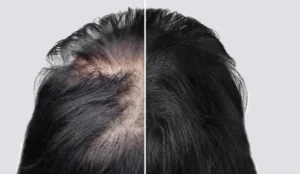What is the role of hair transplant in scarring alopecia?

Scarring alopecia, also known as Cicatricial alopecias (CA) has been one of the major hair-related problems when it comes to treatment through hair transplantation. Variable factors like genetics, infections, and hormonal can be the root cause behind the problem. CA should be dealt with seriously and as soon as possible because the spreading of scarring alopecia is rapid and if not treated at the right time, it can also lead to permanent baldness. Continuous research on the signs, symptoms, and treatment of scarring alopecia is under process with some useful recent outcomes. Whatever the case, early diagnosis remains intact on the to-do list when you are fighting this problem.To understand Cicatricial Alopecias or scarring alopecia, we can begin by saying that it is a group of common inflammatory hair loss disorders that is followed by lifelong destruction of hair follicles. Initially, the characteristic traits are the loss of visible follicular Ostia over the scarring area. The area of the scalp cannot be predicted and it can be anywhere which also sometimes includes the facial regions. There are methods to tackle CA in the medical field and they have been developed to an extent that can indeed ameliorate the drastically deteriorating scenario. According to the best hair transplant surgeons, a hair transplant is often looked upon as one generous solution to scarring alopecia. There are many factors one needs to meticulously consider before going for a hair transplant as a treatment. Many critical areas like the time of surgery, surgical technique, disease remission determination, and the after-effects of the treatment must be evaluated carefully before proceeding to any advancement in the cure.
Points to remember
- It is very important to opt for the surgical procedure at the right time but it is also one of the most complex factors to be determined because it varies from case to case depending upon the magnitude and effect of scarring alopecia. According to common consensus, a quiescent disease phase of 2 years is mandatory before one pitches in for surgical treatment. Moreover, the complexity of documenting the disease inactivity poses a future dilemma for the surgeon.
- The unpredictability of the vascularity of the scar tissue is also a key factor because it varies in terms of an interpatient and intrapatient variables.
- The graft survival in scar tissue is also unpredictable.
- We must also consider the chances of disease relapse which can further lead to the rebound of grafted follicular units.
- In the cases of extensive scarring, the role of the donor is critical. If there is a donor insufficiency, it can limit the possibility of a Hair Transplant.
- The process cannot be completed over a single session. For the best results and good cosmetic outcomes, multiple sessions are needed.
- There is also a possibility of Male pattern baldness (MPB) or female pattern hair loss (FPHL). These factors should also be pre-considered before designing the transplant schedule and the areas undergoing transplant should be well studied in respect of multiple medical indicators necessary for a successful hair transplant.
- Sometimes the surgical procedure becomes the reason behind triggering the relapse of CA.
- The trend of wound healing characteristics is quite random and can vary up to a great extent.
- There are a few problems that can be encountered after Hair Transplant. The cause of these problems can vary from the precision of the transplantation to the way the client has handled the transplanted area after the surgical procedure. These problems include hypertrophic scars, graft rejection, infection and corkscrew hair.


